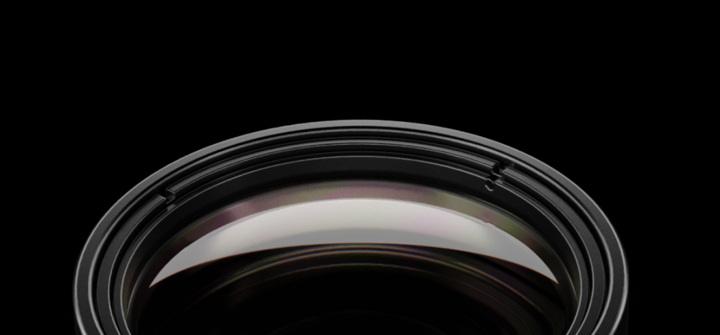In 2000, several former employees of film camera and projector manufacturer Eumig, which filed for insolvency in 1981, joined together to found In-Vision Digital Imaging Optics GmbH, a manufacturing shop for projection lenses just outside Vienna, Austria. When the popular movie Avatar was released in 2009, and digital technology in movie theatres was on the rise, the company became a market leader in high-precision optical systems for industrial applications, and began working with Texas Instruments on a DLP 3D printer, finishing the first prototype in 2014 and releasing its first Full-HD Light Engine on the global market a year later.
By 2017, In-Vision had developed eight light engine systems for customers in 3D metrology, additive manufacturing, and maskless lithography, and now creates and manufactures high-end, DLP-based light engines for optical systems, which are used by customers all over the world. In addition to a production site in Austria, the company also operates two R&D departments, one in Austria and one in Boston.
This fall, after two years of R&D work, the company released HELIOS, which it’s calling in a press release “the most powerful light engine on the market” for DLP 3D printing. In-Vision says it’s meeting its manufacturing customers’ needs for high intensity light with HELIOS.
In the release, Christof Hieger, CTO of In-Vision, said, “The HELIOS light engine is a UV light projector for additive manufacturing that was specifically developed to achieve the highest illumination intensity to allow for faster prints and the use of highly reactive photopolymers. There has always been a high demand for more light intensity among our customers. However, we could not find an off-the shelf light source that could fulfil this need. We knew we had a team who was able to come up with a great product, so we started our own development.”
The powerful HELIOS light engine, based on the company’s proprietary light source, can attain 60W of illumination intensity, which In-Vision says is two times more than what most typical light engines can offer. With that much light intensity, the company says that its HELIOS can provide “more than 12W on the image plane.”
 While In-Vision knew that the optical performance of HELIOS was high, the company also wanted to include plenty of customer improvements for the DLP light engine.
While In-Vision knew that the optical performance of HELIOS was high, the company also wanted to include plenty of customer improvements for the DLP light engine.
Gerold Aschinger, the head of In-Vision’s HELIOS development team, stated, “All optical elements and their coatings have been optimized to offer higher uniformity and contrast ratios than any other system we benchmarked.
“It has never been easier to operate and maintain a DLP light engine. The entire projector follows a modular design: it is fully built in sub-assemblies for highest accessibility and the LED module can be easily exchanged by the customer.”
HELIOS features tailored prism geometry which offers excellent homogeneity values, tested with 25 separate points of measurement. Its silica lens elements are fused for high transmission illumination, with an enclosed housing of the light path, and the website says the LED is easy to change. Finally, counter pressure mechanics were used to configure the tilt and x/y axes, so that the optics can be precisely aligned and configured for high performance and distortion values.
Hieger said, “With this product we want contribute to even more cost-effective prints, allow for new materials and qualify additive manufacturing further for serial production applications.”
The HELIOS light engine for optics applications in DLP 3D printing will be available in customized pixel solutions and wavelengths, with 385 nm, 406 nm, and 460 nm versions currently available at a resolution of 2K.
“With this product we want to contribute to even more cost-effective prints, allow for new materials and qualify additive manufacturing further for serial production applications,” the website states.
Serial production of HELIOS began this month, and the first customers in Asia and the US have already fulfilled their qualification tests.
(Source/Images: In-Vision)
Subscribe to Our Email Newsletter
Stay up-to-date on all the latest news from the 3D printing industry and receive information and offers from third party vendors.
Print Services
Upload your 3D Models and get them printed quickly and efficiently.
You May Also Like
3D Printing News Briefs, July 2, 2025: Copper Alloys, Defense Manufacturing, & More
We’re starting off with metals in today’s 3D Printing News Briefs, as Farsoon has unveiled a large-scale AM solution for copper alloys, and Meltio used its wire-laser metal solution to...
3DPOD 260: John Hart on VulcanForms, MIT, Desktop Metal and More
John Hart is a Professor at MIT; he´s also the director of the Laboratory for Manufacturing and Productivity as well as the director of the Center for Advanced Production Technologies....
3D Printing News Briefs, June 28, 2025: Defense Accelerator, Surgical Models, & More
In this weekend’s 3D Printing News Briefs, 3YOURMIND was selected to join an EU Defense Accelerator, and PTC has announced model-based definition (MBD) capabilities within Onshape. Finally, a study out...
EOS in India: AM’s Rising Star
EOS is doubling down on India. With a growing base of aerospace startups, new government policies, and a massive engineering workforce, India is quickly becoming one of the most important...



































